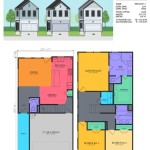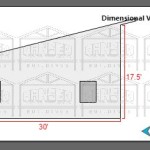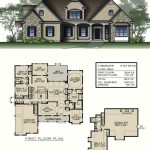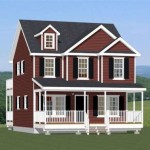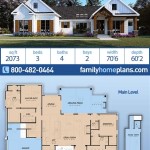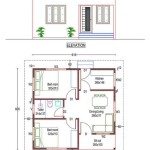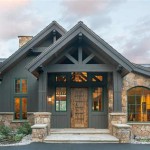Exploring Two-Story, Two-Car Garage Plans: Space, Functionality, and Design
Two-story, two-car garage plans represent a significant investment in property enhancement, offering a blend of vehicle accommodation and supplemental living or storage space. These plans cater to a diverse range of needs, providing solutions for homeowners requiring additional storage, workshop areas, home offices, or even potential rental units above the standard garage space. Understanding the multifaceted aspects of these plans is crucial for making informed decisions regarding design, construction, and overall project feasibility.
This article delves into the key considerations surrounding two-story, two-car garage plans, encompassing structural design, functional possibilities, zoning regulations, cost implications, and the value they can add to a property. Careful planning and a thorough understanding of these aspects are paramount to ensuring a successful and satisfactory outcome.
Structural Considerations and Building Codes
The structural integrity of a two-story garage is a paramount concern. Consequently, meticulous attention must be paid to the foundation, framing, and roofing systems. The foundation must be robust enough to support not only the weight of two vehicles and the garage structure itself, but also the additional load of the upper level. This often necessitates a reinforced concrete slab or a foundation wall system extending below the frost line, adhering to local building codes specific to the region's climate and soil conditions. Soil testing is frequently required to determine the load-bearing capacity of the ground and to inform the design of the foundation.
Framing, typically constructed from wood or steel, needs to comply with stringent building codes concerning load-bearing capacity and wind resistance. Wall studs, floor joists, and roof rafters must be appropriately sized and spaced to ensure structural stability. Steel framing, while offering superior strength and durability, often comes with a higher material cost compared to wood framing. Wood framing necessitates proper treatment to prevent rot and insect infestation. Engineering calculations, performed by a qualified structural engineer, are essential to verify that the framing system meets the required safety standards.
Roofing systems, similarly, must be designed to withstand local weather conditions, including snow loads, wind speeds, and rainfall intensity. Options range from traditional asphalt shingles to more durable materials like metal or tile. The roof pitch, or slope, plays a critical role in water runoff and snow shedding. Building codes often specify minimum roof pitch requirements based on the chosen roofing material and the region's climate. Furthermore, proper insulation and ventilation are crucial for maintaining a comfortable temperature within the garage and preventing moisture buildup.
Compliance with local building codes is not merely a legal requirement; it's a matter of safety. Building permits are typically required for the construction of a two-story garage. These permits involve submitting detailed plans that have been reviewed and approved by local building officials. Inspections are conducted at various stages of construction to ensure adherence to the approved plans and code requirements. Failure to comply with building codes can result in fines, delays, and even the potential for having the structure torn down.
Functional Possibilities and Design Options
The design of a two-story, two-car garage allows for a multitude of functional applications beyond simply housing vehicles. The upper level can be adapted for various purposes, significantly enhancing the usability of the structure. Popular options include a home office, a recreational room, a guest suite, or additional storage space. The specific function will dictate the interior layout, insulation requirements, and the necessity for plumbing and electrical systems.
For a home office, adequate natural light, proper insulation for temperature control, and sufficient electrical outlets for computers and other equipment are essential. Soundproofing may be necessary to minimize noise interference from the garage below or the surrounding environment. A recreational room might require a more open floor plan, ample space for entertainment equipment, and possibly a wet bar or kitchenette.
A guest suite demands careful consideration of privacy and comfort. A separate entrance is often desirable, as is a full bathroom and a small kitchen area. Proper insulation is crucial for soundproofing and temperature control, ensuring a comfortable and private living space for guests. Additional storage space can be maximized through built-in shelving, cabinets, and organizational systems. Consideration should be given to the accessibility of the storage area, ensuring that items can be easily retrieved and stored.
The exterior design of the garage should complement the existing architecture of the main house. Matching the siding material, roofing style, and window design can create a cohesive and aesthetically pleasing appearance. Window placement is important for maximizing natural light while maintaining privacy. The placement of doors and access points should be carefully considered to optimize functionality and traffic flow. Furthermore, landscaping around the garage can enhance its visual appeal and integrate it seamlessly into the surrounding environment.
Accessibility is a crucial design consideration, particularly for individuals with mobility limitations. Ramps or elevators can be incorporated into the design to provide access to the upper level for those who cannot use stairs. Building codes often require specific accessibility features in new construction, especially if the upper level is intended for residential use.
Zoning Regulations, Permits, and Cost Implications
Before embarking on a two-story garage project, it is imperative to thoroughly research and understand local zoning regulations. Zoning laws dictate the permissible uses of land, the size and height of structures, and the required setbacks from property lines. These regulations can vary significantly from one municipality to another, and non-compliance can result in significant fines and delays.
Zoning regulations often specify the maximum allowable height for accessory structures, such as garages. They may also restrict the placement of garages in relation to property lines and other buildings. Setback requirements dictate the minimum distance that a structure must be set back from property lines, ensuring adequate space between buildings and minimizing the potential for property line disputes. In some cases, zoning ordinances may prohibit the construction of a second story on a garage altogether.
Obtaining the necessary building permits is a crucial step in the construction process. Permit applications typically require detailed plans, including architectural drawings, structural calculations, and site plans. The plans must demonstrate compliance with all applicable building codes and zoning regulations. The permit application process can be lengthy and require multiple revisions before approval is granted. It is often advisable to engage a qualified architect or engineer to prepare the necessary plans and navigate the permit process.
The cost of constructing a two-story, two-car garage can vary widely depending on several factors, including the size of the garage, the materials used, the complexity of the design, and the location of the project. Material costs can fluctuate significantly depending on market conditions and the availability of resources. Labor costs will vary depending on the region and the expertise of the contractors involved. Unexpected expenses, such as unforeseen site conditions or design changes, can also contribute to cost overruns.
A detailed budget is essential for managing the costs of the project. The budget should include all anticipated expenses, such as materials, labor, permits, and professional fees. It is also prudent to include a contingency fund to cover unexpected expenses. Obtaining multiple bids from qualified contractors can help ensure that the project is completed at a fair and competitive price. Furthermore, the potential increase in property value resulting from the addition of a two-story garage should be considered when evaluating the overall cost-benefit analysis of the project.

Extended 2 Car Two Story Garage Plan W Apartment Option

Extended 2 Car Two Story Garage Plan W Apartment Option

Garage Plan Mustang 6986 Drummond House Plans

2 Car Two Story Garage Plan W Apartment Option

2 Car Garage Apartment Plan 59446 Two With Art Studio And Bathroom

Garage Apartment Plans Two Car Plan With Studio Design 051g 0007 At Thegarageplan Com

1307 1b 2 Car Garage Plan Story Optional Apartment

Two Car Garage Plans

2 Car Garage Apartment Plan 58563 Country Style With 1 Bed Bath

Garage Plan 4084 2 Car House Floor Frank Betz Associates

